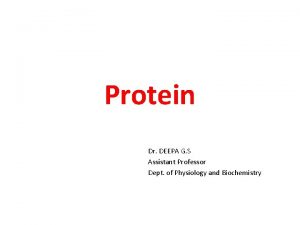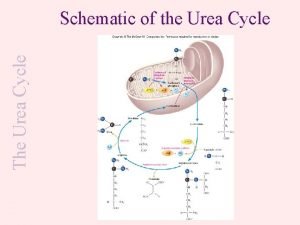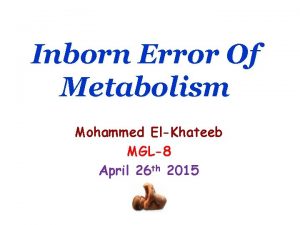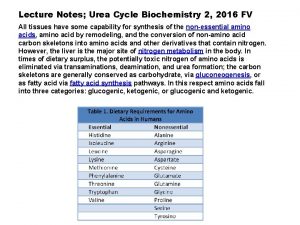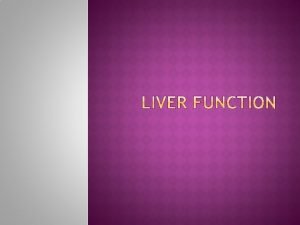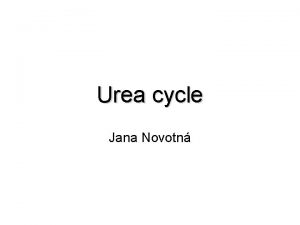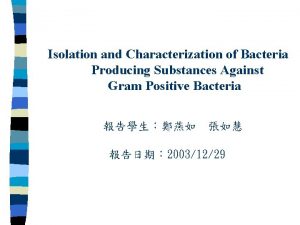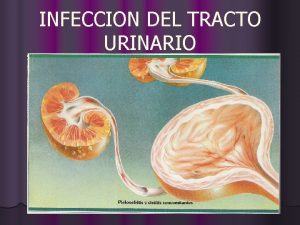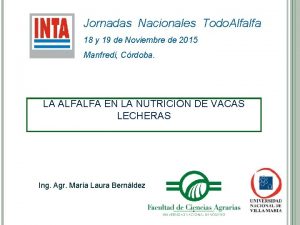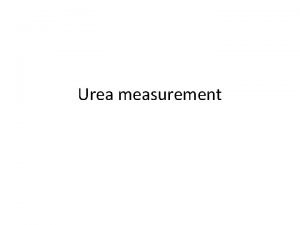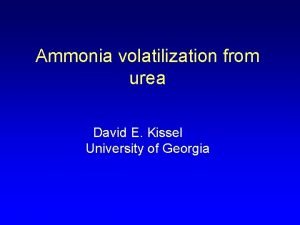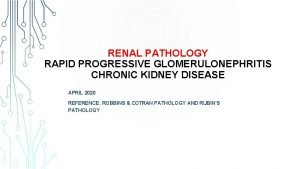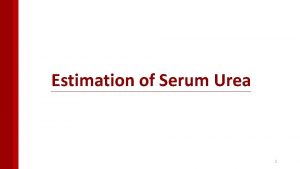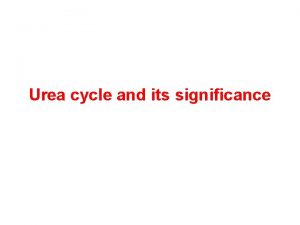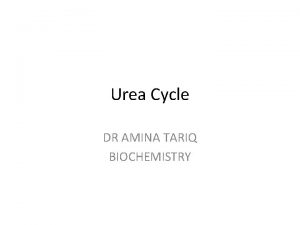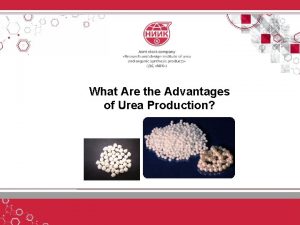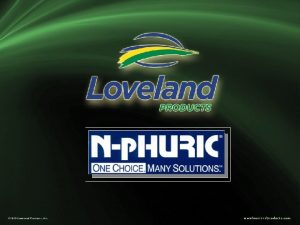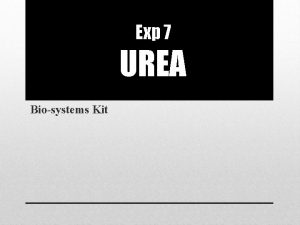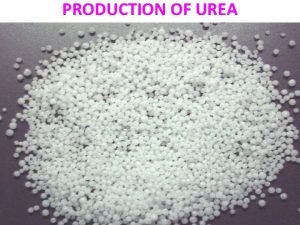The Urea Cycle Schematic of the Urea Cycle












- Slides: 12

The Urea Cycle Schematic of the Urea Cycle

The Urea Cycle Disposal of ammonia – the Urea cycle • Conversion of ammonia to less toxic, urea, in the liver

The Urea Cycle (Liver) Chemical Origins of Urea • One NH 2 is derived from the deamination of Glu or Gln in • the mitochondria through carbamoyl phosphate • The central carbon is derived from bicarbonate, also through carbamoyl phosphate (synthesis, next slide) • The other NH 2 is donated by Asp

The Urea Cycle (Discovered by H. Krebs) Arg regulates Carbamoyl P Synthetase I Biochemistry 221 - Metabolism

The Urea Cycle • The activation of carbamoyl phosphate requires 2 ATP * • This reaction uses HCO 3 that is a byproduct of mitochondrial respiration • *The carbamoyl phosphate amino group originates from ammonia that has been transported to the liver as 1. ammonia (portal vein), 2. glutamine (other tissues), 3. amino acids (glutamate) or 4. alanine (muscle)

The Urea Cycle Step 1 First step combines CO 2 and NH 4+ to form carbamoyl phosphate – Reaction requires ATP and H 2 O – Takes place in the mitochondria – Catalyzed by carbamoyl phosphate synthase

The Urea Cycle Step 2 Carbamoyl phosphate condenses with the amino acid ornithine to produce the amino acid citrulline – Occurs in the mitochondria – Catalyzed by ornithine transcarbamoylase

Step 3 The Urea Cycle Citrulline is transported to the cytoplasm – Condenses with aspartate to produce argininosuccinate – Catalyzed by argininosuccinate synthase – Requires energy released by ATP hydrolysis

The Urea Cycle Step 4 • Argininosuccinate cleaved to produce the amino acid arginine and fumarate of the citric acid cycle • Reaction catalyzed by argininosuccinate lyase

The Urea Cycle Step 5 • Final reaction hydrolyzes arginine to generate urea – the reaction product that is excreted • Reaction also regenerates ornithine, the original reactant in the cycle • Reaction is catalyzed by arginase

Urea cycle – overall • Uses 4 high-energy bonds • Urea derives 1 N from ammonia; the second N from aspartate; carbon from CO 2 or HCO 3 - • Urea travels via blood to kidneys for excretion in urine

UREA FORMATION
